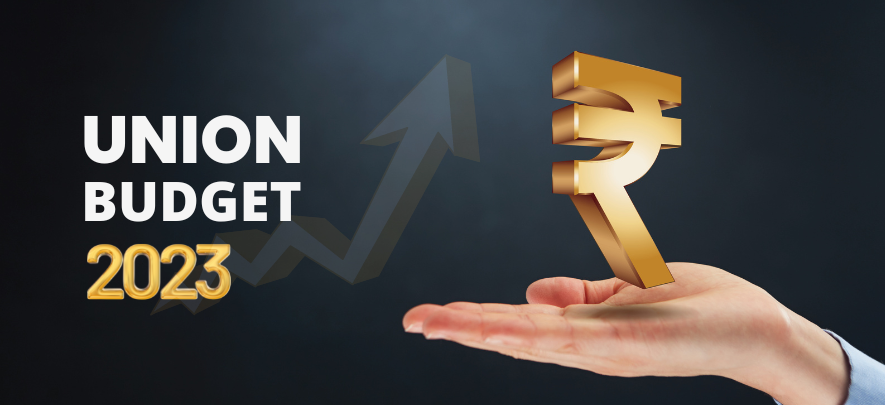Union Budget 2023: Key Highlights for MSMEs & Other Sectors

Economy
118 week ago — 9 min read
Finance Minister, Nirmala Sitharaman presented Union Budget 2023 in Parliament today. This Budget has been of particular interest as it is the last before the 2024 general elections.
In her speech, she referred to it as ‘the first Budget in Amrit Kaal’. This was a term used by Prime Minister Modi on India’s 75th Independence Day, referring to the roadmap for the next 25 years. The Finance Minister elaborated, “Our vision for the Amrit Kaal includes technology-driven and knowledge-based economy with strong public finances, and a robust financial sector.”
Priorities of Union Budget 2023
Overall this Budget has seven priorities.
- Inclusive Development
- Reaching the Last Mile
- Infrastructure and Investment
- Unleashing the Potential
- Green Growth
- Youth Power
- Financial Sector
Key Provisions for MSMEs
Credit Guarantee for MSMEs
The Finance Minister announced, “Last year, I proposed revamping of the credit guarantee scheme for MSMEs. I am happy to announce that the revamped scheme will take effect from 1st April 2023 through infusion of 9,000 crore in the corpus. This will enable additional collateral-free guaranteed credit of ` 2 lakh crore. Further, the cost of the credit will be reduced by about 1 per cent.”
Tax Benefits for MSMEs & Professionals
Stating that MSMEs are growth engines of the economy, the Finance Minister said, “Micro enterprises with turnover up to 2 crore and certain professionals with turnover of up to 50 lakh can avail the benefit of presumptive taxation. I propose to provide enhanced limits of 3 crore and 75 lakh respectively, to the tax payers whose cash receipts are no more than 5 per cent. Moreover, to support MSMEs in timely receipt of payments, I propose to allow deduction for expenditure incurred on payments made to them only when payment is actually made.”
Vivad se Vishwas I – Relief for MSMEs
In cases of failure by MSMEs to execute contracts during the Covid period, 95 per cent of the forfeited amount relating to bid or performance security, will be returned to them by government and government undertakings. This will provide relief to MSMEs.
Entity DigiLocker
An Entity DigiLocker will be set up for use by MSMEs, large business and charitable trusts. This will be towards storing and sharing documents online securely, whenever needed, with various authorities, regulators, banks and other business entities.
Ease of Business
For enhancing ease of doing business, more than 39,000 compliances have been reduced and more than 3,400 legal provisions have been decriminalised. For furthering the trust-based governance, the Jan Vishwas Bill has been introduced to amend 42 Central Acts.
Common Business Identifier
For the business establishments required to have a Permanent Account Number (PAN), the PAN will be used as the common identifier for all digital systems of specified government agencies. This will bring ease of doing business; and it will be facilitated through a legal mandate.
Unified Filing Process
For obviating the need for separate submission of same information to different government agencies, a system of ‘Unified Filing Process’ will be set-up. Such filing of information or return in simplified forms on a common portal, will be shared with other agencies as per filer’s choice.
Other Highlights for Various Industries & Sectors
Agriculture
Digital Public Infrastructure for Agriculture
Digital Public infrastructure for agriculture will be built as an open source and interoperable public good. This will enable relevant services for crop planning and health, credit, insurance, market intelligence, and support for growth of agri-tech industry and startups.
Agriculture Accelerator Fund
An Agriculture Accelerator Fund will be set-up to encourage agri-startups in rural areas. The Fund will aim at bringing innovative, affordable solutions and modern technologies to increase productivity and profitability.
Atmanirbhar Horticulture Clean Plant Program
Atmanirbhar Clean Plant Program to be launched to boost availability of disease-free, quality planting material for high value horticultural crops at an outlay of 2,200 crore.
Infrastructure & Investment
Capital investment outlay is being increased steeply for the third year in a row by 33 per cent to ` 10 lakh crore, which would be 3.3 per cent of GDP.
Enhancing opportunities for private investment in Infrastructure
The newly established Infrastructure Finance Secretariat will assist all stakeholders for more private investment in infrastructure, including railways, roads, urban infrastructure and power, which are predominantly dependent on public resources.
Railways
A capital outlay of 2.40 lakh crore has been provided for the Railways. This highest ever outlay is about 9 times the outlay made in 2013-14.
Centres of Excellence for Artificial Intelligence
For realising the vision of “Make AI in India and Make AI work for India”, three centres of excellence for Artificial Intelligence will be set-up in top educational institutions. Leading industry players will partner in conducting interdisciplinary research, develop cutting-edge applications and scalable problem solutions in the areas of agriculture, health, and sustainable cities.
Environment
Green Hydrogen Mission
The recently launched National Green Hydrogen Mission, with an outlay of `19,700 crores, will facilitate transition of the economy to low carbon intensity, reduce dependence on fossil fuel imports, and make the country assume technology and market leadership in this sunrise sector. Our target is to reach an annual production of 5 MMT by 2030.
Green Credit Programme
For encouraging behavioural change, a Green Credit Programme will be notified under the Environment (Protection) Act. This will incentivize environmentally sustainable and responsive actions by companies, individuals and local bodies, and help mobilize additional resources for such activities.
Electronics
To further deepen domestic value addition in manufacture of mobile phones. There will be relief in customs duty on import of certain parts and inputs like camera lens and continue the concessional duty on lithium-ion cells for batteries for another year. Similarly, to promote value addition in manufacture of televisions, reduction in the basic customs duty on parts of open cells of TV panels to 2.5 per cent.
Metals
To facilitate availability of raw materials for the steel sector, exemption from Basic Customs Duty on raw materials for manufacture of CRGO Steel, ferrous scrap and nickel cathode is being continued. Similarly, the concessional BCD of 2.5 per cent on copper scrap is also being continued to ensure the availability of raw materials for secondary copper producers who are mainly in the MSME sector.
Senior Citizens
The maximum deposit limit for Senior Citizen Savings Scheme will be enhanced from 15 lakh to 30 lakh. The maximum deposit limit for Monthly Income Account Scheme will be enhanced from 4.5 lakh to 9 lakh for single account and from 9 lakh to 15 lakh for joint account.
Personal Income Tax
The Finance Minister said, “In the year 2020, the new personal income tax regime had six income slabs starting from 2.5 lakh. I propose to change the tax structure in this regime by reducing the number of slabs to five and increasing the tax exemption limit to 3 lakh.” The new tax rates are:
|
0-3 lakh |
Nil |
|
3-6 lakh |
5 per cent |
|
6-9 lakh |
10 per cent |
|
9-12 lakh |
15 per cent |
|
12-15 lakh |
20 per cent |
|
Above 15 lakh |
30 per cent |
The new income tax regime is the default tax regime. However, citizens will continue to have the option to avail the benefit of the old tax regime.
Image source: Canva
Information source: https://www.indiabudget.gov.in/
To understand the implications of Union Budget 2023 and get answers to SME queries, GlobalLinker organised a webinar with seasoned Chartered Accountant & Tax Expert - CA Ritul Patwa. Watch the highlights below.
Posted by
GlobalLinker StaffWe are a team of experienced industry professionals committed to sharing our knowledge and skills with small & medium enterprises.
View GlobalLinker 's profile
Most read this week













Comments
Share this content
Please login or Register to join the discussion